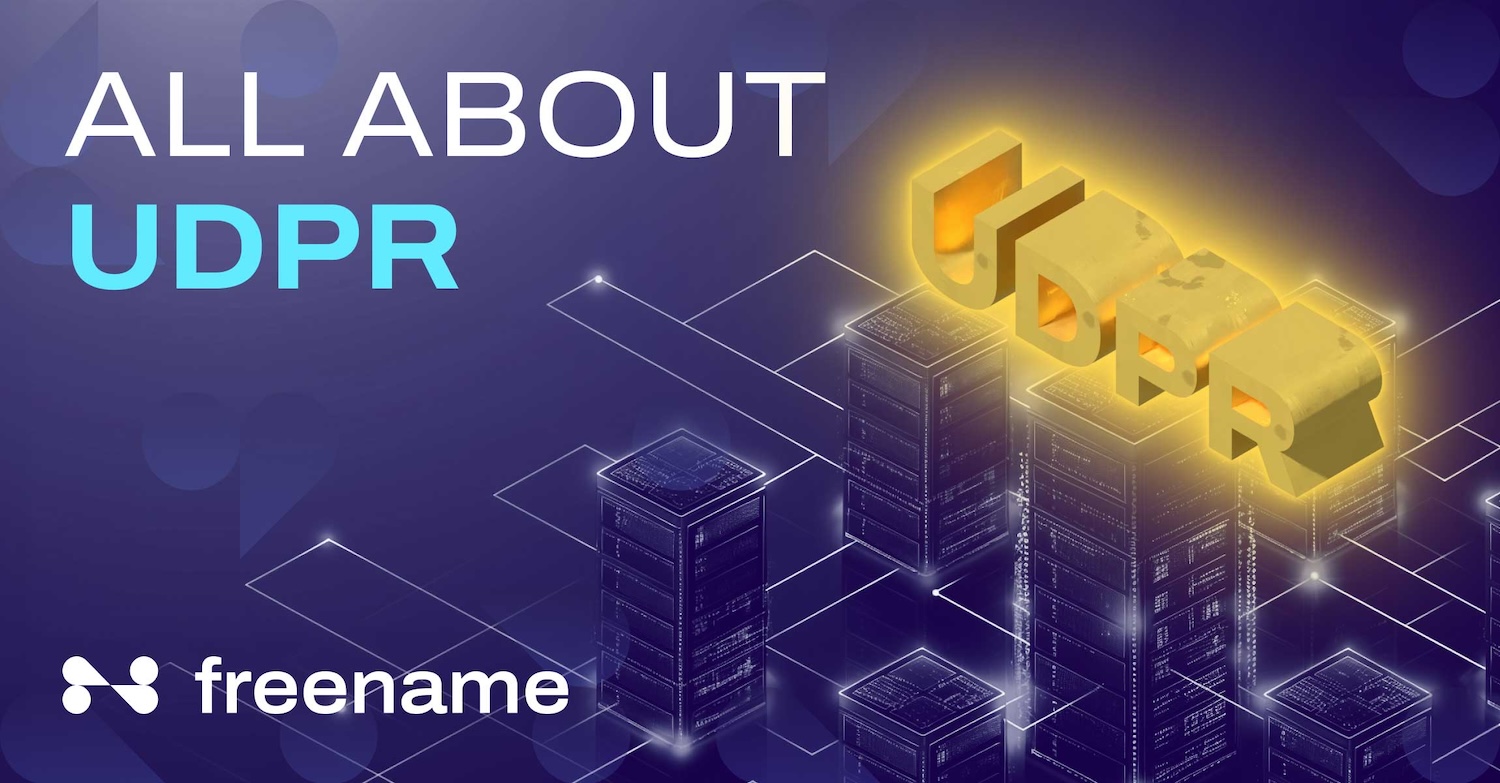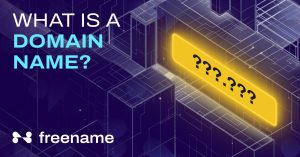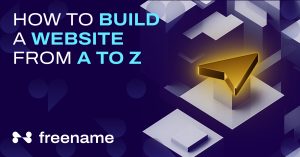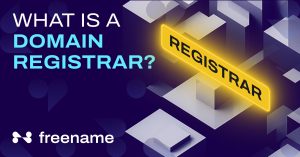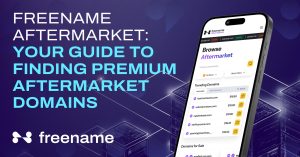Domain Name Disputes and UDRP Policy
Domain names play a crucial role in representing brands and businesses online. To give you an idea, the first public domain name, Symbolics.com, was registered in 1985. Today, there are more than 628 million registered domain names worldwide.
This expansion of the internet gave rise to instances of domain name disputes, leading to the formation of the Uniform Domain-Name Dispute-Resolution Policy (UDRP). This post takes a deep dive into the UDRP: its significance and how its role has evolved in the context of Web3 domains.
What is UDRP Policy?
In simple words, UDRP is a framework to sort out issues related to domain names. This framework offers a step-by-step process for resolving domain name disputes, saving ample time and money spent on court litigation.
Definition of UDRP
The Uniform Domain-Name Dispute-Resolution Policy (UDRP) was introduced by the Internet Corporation for Assigned Names and Numbers (ICANN) in 1999. The purpose was to provide a legal framework to domain users who may face difficulty registering their domain names.
The main goal of UDRP is to counter cybersquatting, which involves using someone else’s trademark to register, use, or sell a domain name. The UDRP framework lets trademark owners initiate a legal process to resolve such disputes.
What is ICANN’s Role in Domain Name Disputes?
As mentioned earlier, ICANN introduced UDRP, which all ICANN-authorized registrars have adopted. ICANN oversees domain name registration and ownership. It ensures that the UDRP mechanism is applied uniformly across all authorized registrars.
The involvement of ICANN ensures:
- Consistent enforcement of the UDRP framework
- Preventing misuse
- Maintaining the integrity of the domain name system
Significance of UDRP
This policy provides a clear path to address grievances associated with domain ownership. Hence, it is crucial for both domain registrants and trademark holders (domain registrars).
- UDRP is a clear and fair dispute resolution mechanism that helps domain registrants efficiently resolve disputes without court litigation.
- This framework offers domain registrars a quick and efficient way to protect their intellectual property rights.
Why Domain Name Disputes Occur
There are multiple reasons for domain name disputes. A disputed domain name may exactly match your domain name or have your name in the middle of their name. Such domain names can mislead the audience, hence disputed domain names.
Below are some of the most common reasons for domain name disputes:
Trademarks Infringement
You may experience someone infringing your registered trademark, forcing you to exercise your ownership rights to reclaim your domain. One of the best examples of trademark violation is the 3M vs. 3N lawsuit.
3M filed a lawsuit against Changzhou Huawei Advanced Material Co Ltd for intentionally misusing their name. Although 3N represented different products and pricing, it was too close to misleading 3M’s customers.
According to the verdict, a name that mimics the name of a world-known company can confuse customers. It may mislead them. So, if a company registers “Nike-shoes.com” without Nike’s permission, it will be treated as a trademark violation.
This example also emphasizes the importance of the TLD trademark. If you own a Freename TLD, you can trademark it through Freename’s trademark services. Freename offers TLD protection worldwide for up to six months from the time you submit your domain trademark request.
Cybersquatting
One of the most common reasons for domain name disputes is cybersquatting, which involves registering domain names that are confusingly identical to a well-known trademark. Here, the intention differs from trademark violation; it’s about:
- Selling domains at a profit
- Spreading fake or false information
- Misleading the audience to buy something,
- Spreading adware, spyware, and other malicious data, or
- Stealing user’s personal information
In 2020, the Fox News domain owner filed a lawsuit against xofnews.com and FoxNews-entertainment.com for cybersquatting.
In addition to confusingly identical names, the two domains had similar logos, design themes, and styles. These websites offered false information, luring users into fake transactions.
Tension Between Trademark Holders and Domain Registrants
It’s clear that when someone buys a domain name tied to a trademark (other than the trademark holder), the trademark holder can raise a dispute. Things were not as clear when domain buying started in the 1990s.
People started buying domain names without considering whether the names were tied to trademarks, which became a bigger problem. Thankfully, ICANN launched the UDRP framework, paving the way to smooth and sophisticated domain name resolution between trademark holders and domain registrants.
If the domain registrant is found guilty of the trademark violation, they would have to transfer the domain name rights to the trademark holder.
WIPO’s Role in Domain Disputes
The World Intellectual Property Organization (WIPO) is key to mediating or arbitrating domain name disputes under the UDRP or other policies. Since 2014, WIPO has handled more than 67,000 cases related to 120,000 domain names. These disputes involved registrars and registrants from 185 countries.
The following chart shows year-by-year disputes administered by WIPO:
| Year | Domain Name Disputes |
| 2014 | 2634 |
| 2015 | 2754 |
| 2016 | 3036 |
| 2017 | 3074 |
| 2018 | 3447 |
| 2019 | 3693 |
| 2020 | 4204 |
| 2021 | 5128 |
| 2022 | 5764 |
| 2023 | 6192 |
Users can find more in-depth statistics on WIPO’s official website.
Determining ‘Bad Faith’ Registration
WIPO follows clear UDRP guidelines in determining whether the domain registration occurred due to bad faith. A ‘bad faith’ registration is established when:
- The domain registrant intends to sell the domain to the trademark holder at a profit.
- The purpose of registering a domain is to prevent the trademark owner from registering it.
- The domain registrant registers a domain tied to a competitor’s trademark in order to disrupt their business.
The Process
The process is as follows:
- Step 1: Filing a complaint: The trademark owner prepares their application and files a complaint with WIPO. The trademark owner should email [email protected] and send two hard copies to the WIPO Arbitration and Media Center via postal mail or courier service. The complaint must provide evidence of ‘bad faith’ registration.
- Step 2: Complaint review: WIPO AMC will check whether the complaint complies with the UDRP. This process should take 3 days.
- Step 3: Administrative proceedings: WIPO AMC will notify the respondent about the commencement of administrative proceedings.
- Step 4: Filing of response: The respondent will have 20 days from the commencement of the proceedings to file their response. Otherwise, WIPO will notify the respondent one more time.
- Step 5: Panel formation: WIPO will appoint a single member or three members according to the nature of the complaint. The panel will be impartial and independent.
- Step 6: Panel decision: After reviewing the complaint and the response, the panel will submit its decision to the WIPO Center within 14 days.
- Step 7: Notification of decision: Within 3 days, the WIPO Center will notify the parties, concerned registrars, and ICANN of the panel’s decision.
- Step 8: Implementation: The registrar will implement the decision, adhering to paragraph 4(k) of the UDRP.
Note: WIPO operates on a not-for-profit basis and follows a UDRP Schedule of Fees.
UDRP Policy and Web3 Domains
Web3 marks the evolution of the internet, making it more secure and decentralized. With it comes new challenges for the UDRP framework.
The Web3 domains may differ from the traditional domains, but the UDRP principles will still apply. Ensuring complete implementation of UDRP is important for decentralized domains because:
Maintaining Fairness
There is still a risk of trademark infringement. Web3 domain names that match your trademark name and logo can still be acquired by irrelevant web3 users, causing you to pay higher prices or even disrupting your business through impersonation.
Here, compliance with the UDRP framework will help you maintain fairness and transparency on the decentralized web.
- You will be able to protect your intellectual property better.
- You can reclaim your Web3 domain name if you’re the rightful trademark owner.
Wider Scope
In fact, the scope of UDRP is wider in the Web3 ecosystem because there is a bigger pool of TLDs, such as .crypto, .eth, .gaming, and more. They must adhere to UDRP principles to prevent trademark violations and cybersquatting.
Compliance
The dynamic growth of the digital world demands strong measures to protect intellectual property. The best way to do this is to stay compliant with UDRP. This framework helps in efficient domain name resolution and maintains trust in the domain name system.
Although the decentralized web is secure, it still has the potential to be misused. For instance, a Web3 domain like apple.crypto registered without Apple’s authorization would still fall under UDRP scrutiny.
Conclusion
The Uniform Domain-Name Dispute-Resolution Policy (UDRP) is a vital mechanism that smoothens relationships between TLD trademark owners and domain registrants. It balances each party’s interest, ensuring brand integrity and transparency.
Considering ICANN’s crucial role in managing domain name registration, its suggested policy, UDRP, will positively impact the Web3 ecosystem. Just like Freename, the first Web3-ICANN accredited registrar, we might see more registrars join the league to bridge the gap between the Web2 and Web3 spaces.
This will boost users’ confidence in the decentralized space, helping them expand their trademarked businesses worldwide. By upholding the principles of UDRP, we can ensure a fair and ethical domain name system for all.If you’re considering joining the Web3 ecosystem, Freename provides an excellent opportunity to buy your first Web3 domain. You can also become a TLD owner to open passive income streams for yourself.

